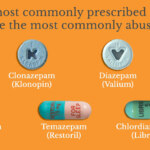Warning: Undefined variable $serie in /home/domains/treatmentandrecoverysystems.com/docs/wp-content/plugins/wp-series-manager/wp-series-manager.php on line 264
Anyone can reoffend, of course, but a 2006 literature review suggests some common characteristics of those who do.
- Significant substance abuse reported at time of first offense — suggesting the presence of a more serious and possibly harmful involvement with substances.
- Aged 30 or older — alcoholism has long been characterized as chronic and progressive precisely because it seems to continue for many years and to worsen with age.
- Heavier alcohol use pattern on assessment — and that’s just what the offender is willing to admit to. The caveat is that research also suggests that offenders underreport their consumption.
- Socioeconomic status — particularly factors such as unemployment, low household income, lack of a college education, being unmarried. Again, not a surprise. Someone who meets several of the above, of course, is likely at slightly higher risk for a number of problems, of which repeat DWI is one.
- Family history of alcohol or drug dependence — this turned out to be a surprisingly strong correlation. That fits with our notion of alcoholism and its tendency to run in families.
- History of other driving offenses – some of us are just plain reckless when it comes to vehicles.
- Prior criminal history — likewise, some of us have already demonstrated a willingness to break criminal laws.
- Regular use of other drugs — which may interact with alcohol to increase sedation, or make it less likely we’ll use good judgment in deciding whether to get in a vehicle.
- Depression — not surprisingly, depressed mood affects good judgment.
Of course, these are more correlates than causes. One or two is not as suggestive of repeat offending as four or five. But it does allow a clinician to apply a rough risk profile to a particular offender.
This post belongs to Deterring Drunk Driving












